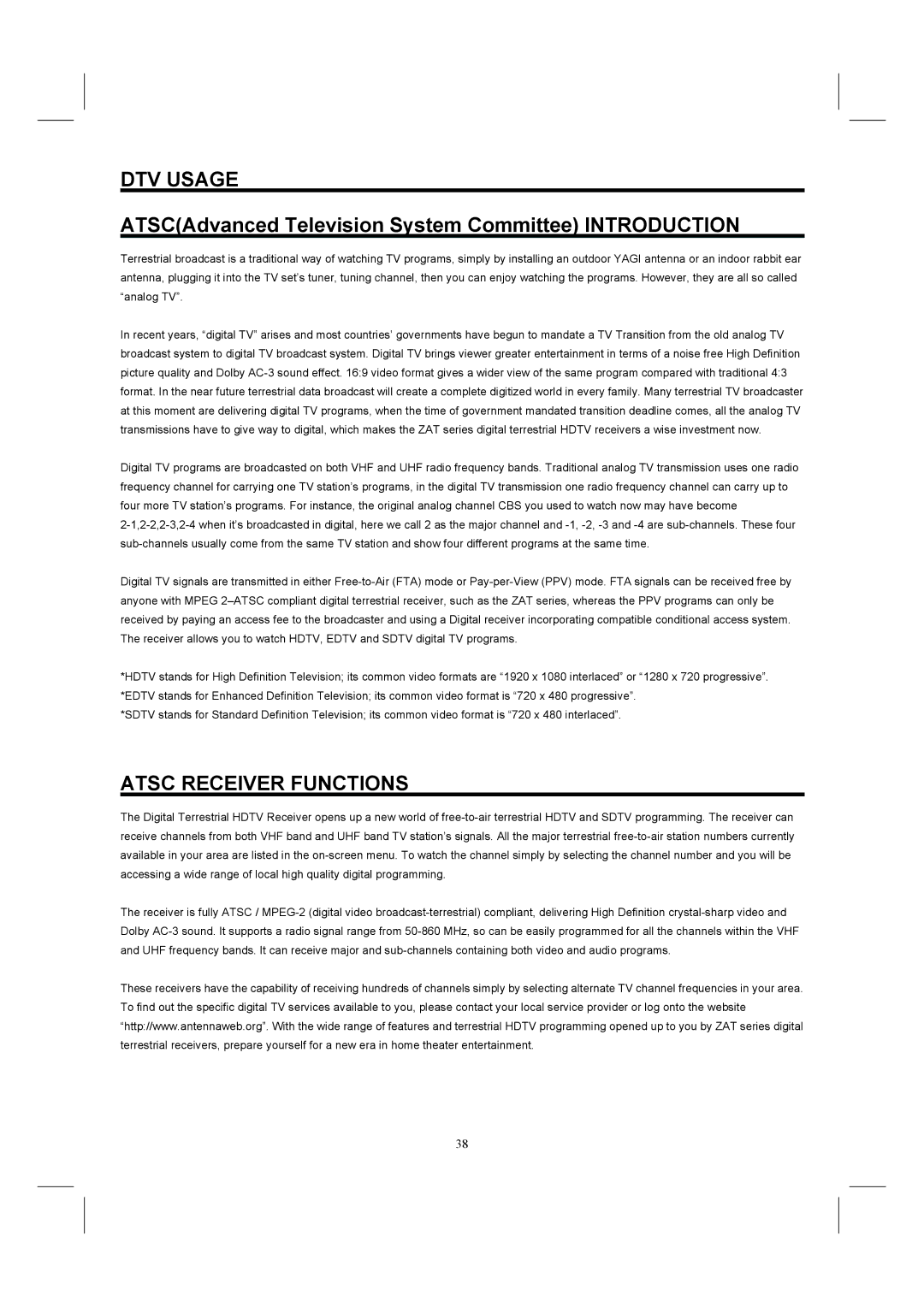
DTV USAGE
ATSC(Advanced Television System Committee) INTRODUCTION
Terrestrial broadcast is a traditional way of watching TV programs, simply by installing an outdoor YAGI antenna or an indoor rabbit ear antenna, plugging it into the TV set’s tuner, tuning channel, then you can enjoy watching the programs. However, they are all so called “analog TV”.
In recent years, “digital TV” arises and most countries’ governments have begun to mandate a TV Transition from the old analog TV broadcast system to digital TV broadcast system. Digital TV brings viewer greater entertainment in terms of a noise free High Definition picture quality and Dolby
Digital TV programs are broadcasted on both VHF and UHF radio frequency bands. Traditional analog TV transmission uses one radio frequency channel for carrying one TV station’s programs, in the digital TV transmission one radio frequency channel can carry up to four more TV station’s programs. For instance, the original analog channel CBS you used to watch now may have become
Digital TV signals are transmitted in either
*HDTV stands for High Definition Television; its common video formats are “1920 x 1080 interlaced” or “1280 x 720 progressive”. *EDTV stands for Enhanced Definition Television; its common video format is “720 x 480 progressive”.
*SDTV stands for Standard Definition Television; its common video format is “720 x 480 interlaced”.
ATSC RECEIVER FUNCTIONS
The Digital Terrestrial HDTV Receiver opens up a new world of
The receiver is fully ATSC /
These receivers have the capability of receiving hundreds of channels simply by selecting alternate TV channel frequencies in your area. To find out the specific digital TV services available to you, please contact your local service provider or log onto the website “http://www.antennaweb.org”. With the wide range of features and terrestrial HDTV programming opened up to you by ZAT series digital terrestrial receivers, prepare yourself for a new era in home theater entertainment.
38
